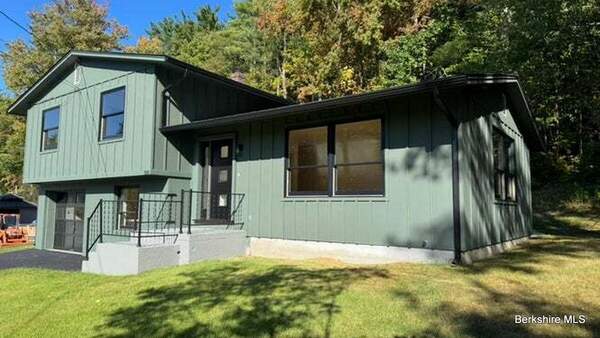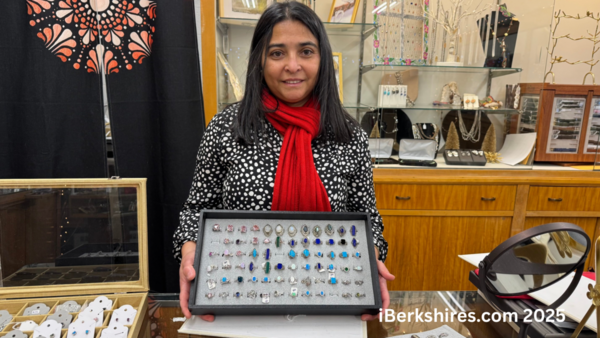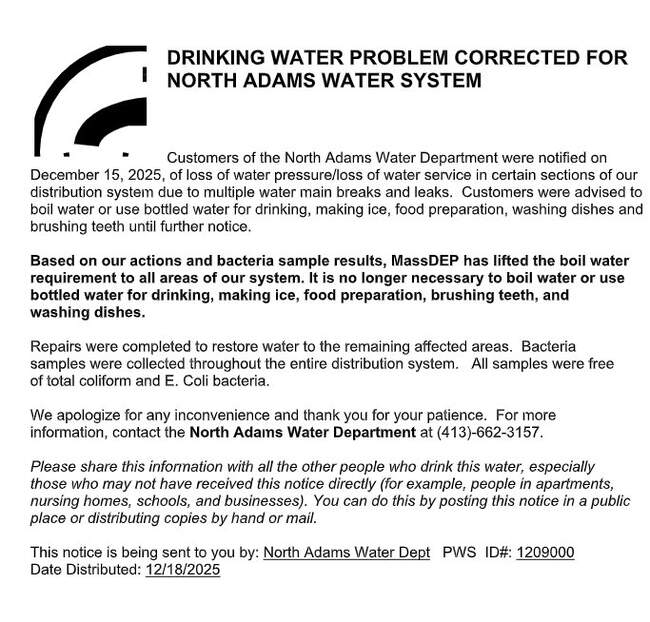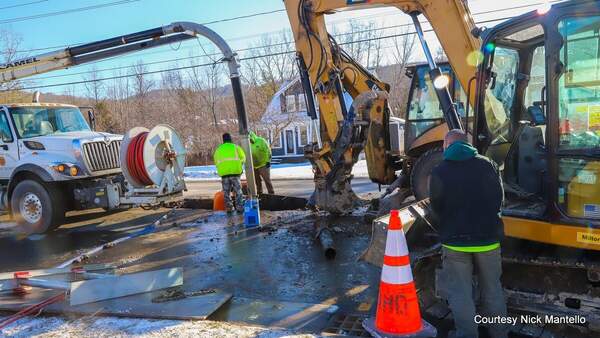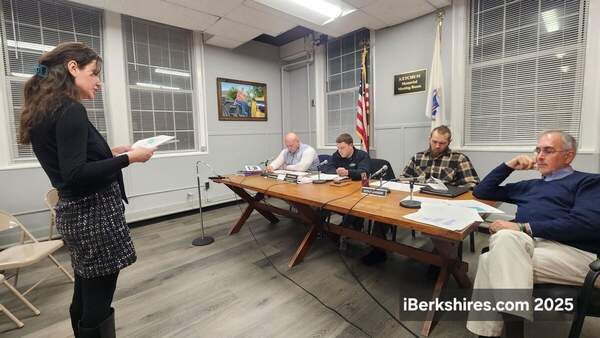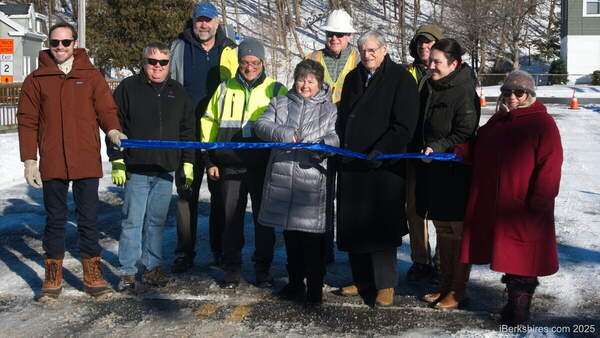Baker Outlines $9.5B in Investment From Federal Infrastructure Bill
Among the hundreds of projects to receive these funds are the $8 million extension of the Ashuwillticook Rail Trail from Adams to Hodges Cross Road in North Adams and the $6.5 million the reconstruction of East Street (Route 9) in Pittsfield. Also in line for funding are some 20 bridges in the Berkshires that are under construction or in design.
"This will make our transportation system more reliable and safer. It will deliver billions of dollars into Massachusetts to help upgrade roads, bridges, and our public transportation system over the next five years and these investments will build on over $18 million that we've already invested over the past seven years in transportation projects and about $1.2 billion invested in climate mitigation efforts as well," said Gov. Charlie Baker, speaking in Lowell on Thursday afternoon.
The governor said the state expects to receive $5.4 billion in highway funding, $2.2 billion for the Massachusetts Bay Transit Authority, another $990 million for regional transportation authorities and $1.4 billion in infrastructure projects with a focus on environmental infrastructure.
"And the one asterik I would put on this is we are going to figure out some way to take our state capital assets and our state capital dollars and some of the ARPA money that's been appropriated by the Legislature to compound so many opportunities are associated with a lot of these resources," he continued.
"There's going to be a lot of money going to work for the people in Massachusetts over the course of the next couple of years."
Lowell was selected for the announcement to highlight how the funding will be used to replace the Rourke Bridge, which carries 27,000 vehicles a day over the Merrimack River. It was supposed to be temporary when it was first built in 1983, but it is still standing and some say they fear it is crumbling, according to officials.
The state Department of Transportation plans to combine bridge funding from the BIL with the state's Next Generation Bridge program to invest about $3 billion in bridges over the next five years, including $170 million for a permanent bridge over the Merrimack.
Officials named 146 bridge projects, representing 181 individual structures, also to be funded as part of that program.
"And every bridge makes a difference. Every bridge matters," said Lt. Gov. Karyn Polito. "But in every case, every bridge is a connection point. And it's a connection point for people to get from one place to the other. Whether it's for jobs and expanding your local economy, or for emergency vehicles to get from A to B quickly and efficiently."
The Bipartisan Infrastructure Law, part of President Biden's "Build Back Better" agenda, was signed into law on Nov. 15, 2021. It will provide $1.2 trillion for infrastructure projects to the 50 states and the territories over the next four fiscal years.
The new law will also allow all 50 states to compete for a portion of an additional $110 billion through various discretionary transportation funding, creating multi-pronged opportunities to help finance and advance both locally-significant and major projects like the federally owned Cape Cod Bridges and the Allston I-90 Multimodal Project. MassDOT has begun preparations to work with its local partners and compete for every dollar possible as federal guidance for these programs becomes available.
Baker confirmed on Thursday that the state has reached an agreement with the Army Corps of Engineers and the Federal Highway Administration for the corps to bid on the project, estimated at $35 billion.
The Corps, which built the Bourne and Sagamore bridges, would bid and pay for the replacement or reconstruction and then hand them back to the state.
"Sen. [Edward] Markey and Sen. [Elizabeth] Warren got a commitment from the Army Corps to bid on that and when I was down there at the National Governors Association meeting, I went and met with the gentleman who actually oversees that program, and he said, yes, we're going to bid on this," the governor said.
The governor thanked the state's congressional delegation for voting for the bill, particularly U.S. House Ways and Means Chairman Richie Neal of Springfield for shepherding the bill, and U.S. Rep. Lori Trahan, who attended the announcement along with Transportation Secretary and CEO Jamey Tesler and Energy and Environmental Affairs Secretary Kathleen Theoharides.
The Baker-Polito administration has invested $9.3 billion in roads and bridges, $7.9 billion in the MBTA system, and $791 million for MassDOT Rail and Transit projects since 2015. With the incoming federal funds, MassDOT will get about $5.4 billion, of which approximately $3.5 billion is the reauthorization of already existing formula programs and $1.8 billion is increased formula funding. Of the $1.8 billion increase, approximately $449 million is an increase in funding for existing programs, and $1.4 billion is for new formula programs.
With the reauthorized funds, new formula funds, and the required state matching funds, MassDOT will be making $6.7 billion in new investments in roadways and bridges over the next five years with BIL funds.
This $449 million increase in reauthorized formula funding will support more than 375 highway projects in the State Transportation Improvement Program (STIP) over the next 5 years, which includes more than $1 billion in fiscal 2022. In addition, MassDOT will work over the coming months with regional partners to develop a prioritized list of roadway, bicycle and pedestrian, and safety projects to be supported with this funding.
The $1.4 billion in funding for new formula programs includes:
-
$1.125 billion for a new bridge formula program;
-
$106.5 million for a resiliency program;
-
$93.7 million for a carbon reduction program;
-
$63.5 million for electric vehicle infrastructure; and
-
$9.1 million for ferry boats and terminals.
This $1.1 billion new formula bridge funding, coupled with the state's $1.25 billion Next Generation Bridge program and other funding from the BIL, will allow MassDOT to invest more than $3 billion in repairing bridges, addressing more than one-third of the structurally deficient bridge backlog. MassDOT has already begun this process by initiating over 146 bridge repair or replacement projects on 181 bridge structures.
-
District 1: Systematic bridge preservation $404,310
-
Adams: Quality Street, Hoosic River $4,584,860
-
Becket:Quarry Road over Cushman Brook $2,015,750
-
Great Barrington: Division Street $13,959,767, Cottage Street $3,850,010 and State Road $10,109,566, all over the Housatonic River
-
Lanesborough: US 7 Williamstown Road (Route 7) over Brodie Mountain Brook $1,784,009; Bridge Street over Town Brook $2,005,593
-
Lee: Meadow Street over Powder Mill Brook $1,357,733; Mill Street over Washington Mountain Brook $1,140,700
-
Monterey: Curtis Road over Konkapot River $992,508
-
New Marlborough: Keyes Hill Road over Umpachene River $2,082,079
-
North Adams: Greylock Bridge (Route 2) $17,769,440; Brown Street $945,192, both over the Hoosic River
-
Pittsfield: Wahconah Street $4,956,034 and Pontoosuc Avenue $2,392,286, both over the West Branch of the Housatonic, and Holmes Road over Housatonic Railroad $2,616,077
-
Sheffield: Kelsey Road over Schenob Brook $1,426,700; County Road over Ironworks Brook $3,552,995
-
Tyringham: Jerusalem Road over Hop Brook $2,313,250
-
Williamstown: Main Street over Hemlock Brook $1,888,123
Tags: infrastructure improvements,

